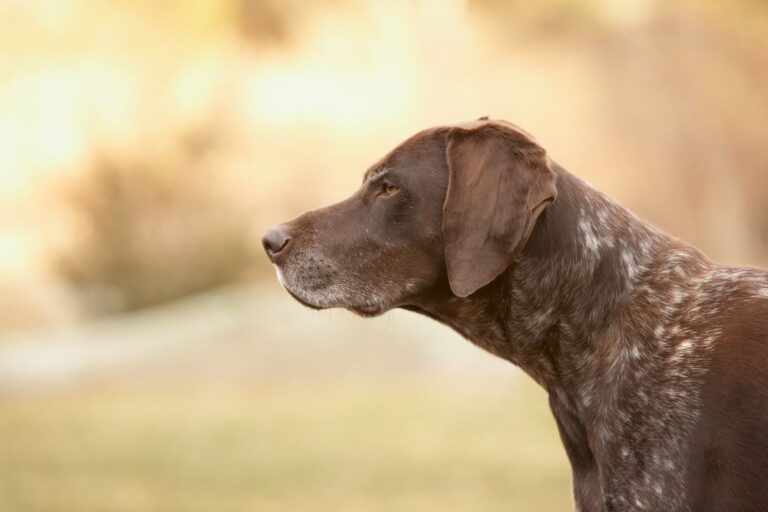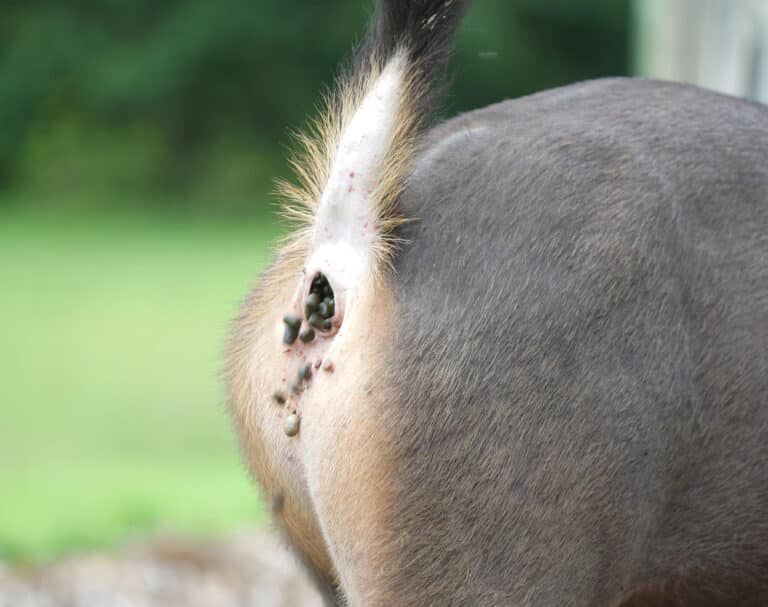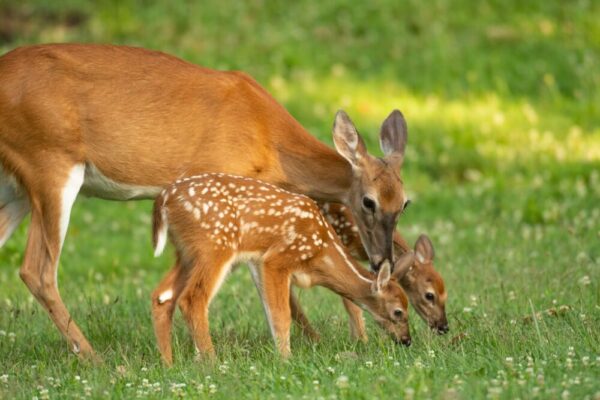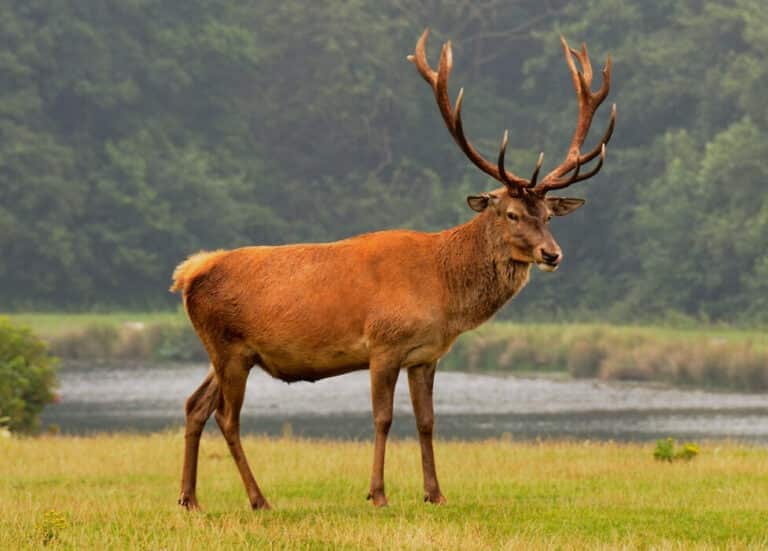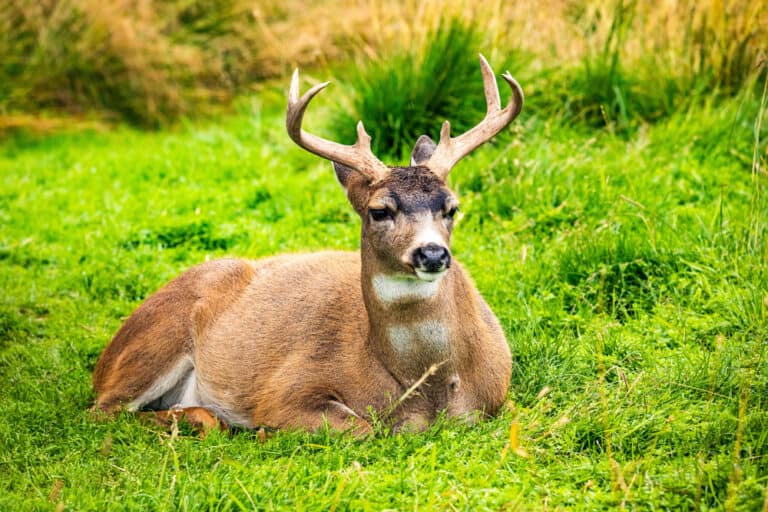Can you identify deer tracks in the woods? Do you know the differences between deer species? How about other animals similar to deer? Let’s get to it!
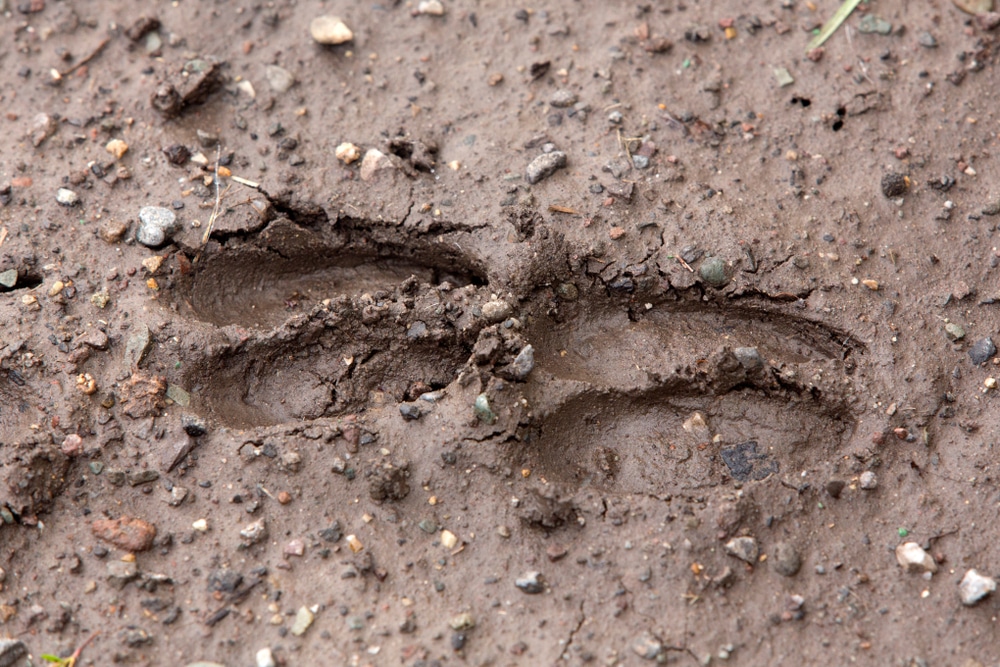
For any passionate deer hunter, understanding deer sign is an essential skill. It’s like deciphering a secret language left behind by these elusive creatures. Tracking deer well can greatly improve hunting success. It reveals travel and feeding patterns and the size and sex of the deer you’re pursuing.
But tracks come in various shapes, sizes, and variations. This can make deer tracks hard to interpret for beginners. This guide covers all you need. It will give you the knowledge and tools to master reading deer tracks.
In the next sections, we’ll look at the parts of a deer track. We’ll also explore the types of deer tracks you’ll find. And we’ll explain how to read the information they hold.
We’ll also cover tips for tracking deer. The tips work in many terrains and weather. By the end of this guide, you’ll be on your way to turning deer prints into a roadmap for your next successful hunt.
Deer tracks seem simple initially, but they hold much information for the trained eye. Understanding the parts of a deer track is the first step. It unlocks this hidden language.
Here’s a breakdown of the key anatomical features you’ll encounter:
Key Features:
Hooves are the hardened coverings of the deer’s toes. They form the main impression left in the soil. The shape and size of the hooves can vary depending on the deer species (whitetail vs. mule deer) and age (fawn vs. adult). Deer, like other hoofed animals, have unique two-toed hoof shapes that are crucial for identification.
Clefts: Deer are classified as artiodactyls, meaning they have cloven hooves. This feature is easy to see in most deer tracks. It appears as a V-shaped dent at the front of the hoof mark.
Dew Claws: These are small, rudimentary toes. They are located slightly higher than the main hooves. They may or may not be visible in a track. This depends on the softness of the soil and the deer’s gait. Whitetail deer typically leave dew claw marks. Mule deer tracks rarely show them.
Pads: The footpad is the fleshy area beneath the hoof and can sometimes leave an impression in soft soil. The heel pad, located at the back of the foot, might be visible in deeper tracks. Deer’s front feet are generally larger and more rounded, while their hind feet are smaller and more pointed.
Understanding these features and their variations is the key. They are the foundation for identifying types of deer tracks and help read their valuable information. In the next section, we’ll look at the details of whitetail and mule tracks and cover how to tell them apart based on track anatomy. Whitetail Deer Tracks: The Classic V
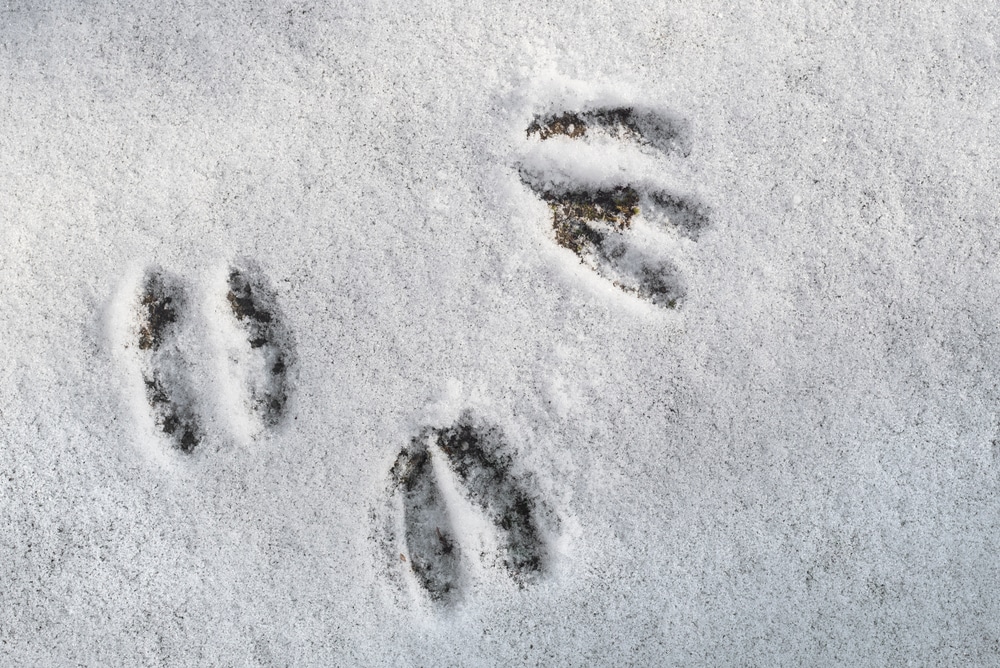
Whitetail tracks are the most commonly encountered by hunters in North America. Here’s what to look for:
Whitetail tracks are smaller than mule tracks. They are about 2-3 inches (5-7.5 cm) long for adults. The front track is usually larger and more rounded than the hind track.
The key identifier is the distinct V-shaped cleft at the front of the hoof impression. This V is typically narrower and more pointed than in mule tracks.
Whitetail tracks often show dew claw marks. They are located slightly above the main hooves. These appear as small, rounded indentations. The front tracks are generally wider and show more prominent dew claw marks than the hind tracks.
Additional Tips:
The shape of the hoof can vary slightly depending on the terrain. In softer soil, the whole hoof may show. In harder ground, it might leave a rounder mark.
Pay attention to stride length, which can indicate the deer’s gait (walk, trot, run) and urgency of travel. Longer strides suggest a faster pace.
3.2 Mule Deer Tracks: Built for Tough Terrain
Mule tracks are typically found in more mountainous regions. Here’s how to distinguish them from whitetail tracks:
Size: Mules are larger than whitetail deer, and their tracks reflect this. Adult mule tracks can measure 3-4 inches (7.5-10 cm) in length. The hind foot tracks are usually slightly smaller and more pointed than the front.
Mules also have a V-shaped cleft. But it’s wider and rounder than in whitetail deer tracks. The overall hoof impression might appear more blocky. The track pattern of mules often shows a more staggered and irregular gait compared to the more uniform track pattern of whitetail deer.
Dew Claws: Mules dew claws rarely leave an impression in their tracks.
Additional Tips:
Mules hooves are for rocky terrain. They may look longer than whitetail deer hooves.
Look for more signs. These include browsing marks on tall plants. These marks can show that mules are there.
3.3 Fawns vs. Adults: Reading Size Matters
Knowing the difference between fawn and adult tracks is crucial. It’s key for ethical hunting. Here’s a quick guide:
Fawn Tracks: Significantly smaller than adult tracks, measuring around 1-2 inches (2.5-5 cm) in length. The V-shape of the cleft might be less pronounced. The front foot of a fawn is typically more rounded and smaller than the rear foot.
As mentioned earlier, adult tracks are typically 2-3 inches long. Mule deer tracks are larger, at 3-4 inches. The rear foot of an adult deer often shows a more elongated and deeper impression, providing insights into the deer’s movement and energy.
By comparing track size to surrounding vegetation or landmarks, you can estimate the age of the deer that left the track.
In the next section, we’ll go beyond basic identification and explore how to decipher the valuable information tracks hold. Tracks reveal the deer’s travel patterns, behavior, and even potential size and sex.
Deciphering the Message of Deer Tracks
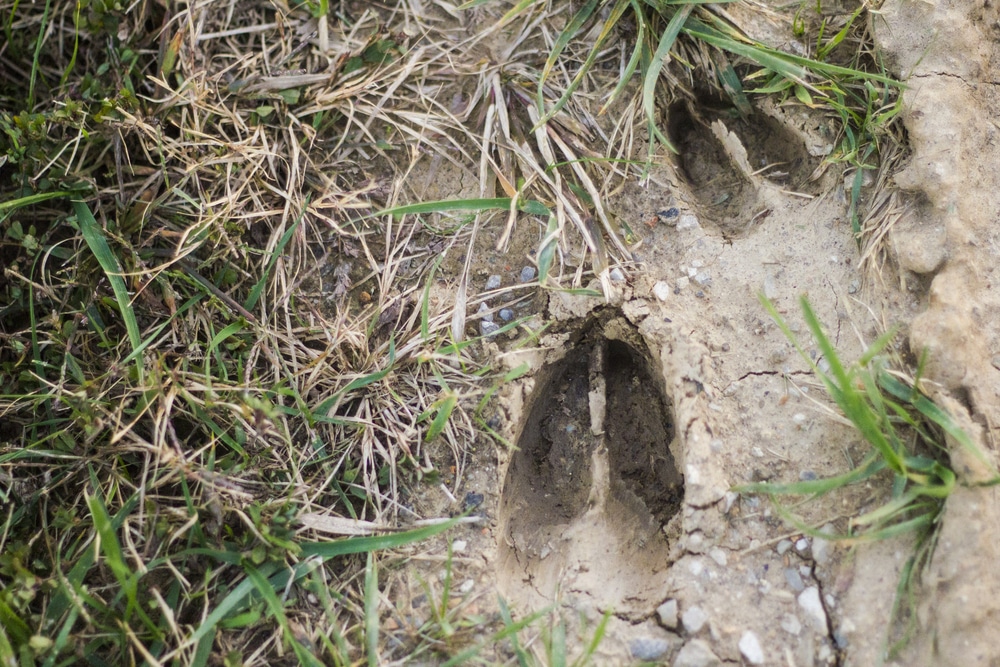
Deer tracks are like silent messages left behind by these wary creatures. Reading these messages lets you identify their tracks and learn valuable insights. They are about deer behavior, travel patterns, and the deer’s potential size and sex. Here’s how to unlock the hidden language of their tracks:
When analyzing deer movement patterns, measuring the distance from the same track to the same track is important. This helps in understanding deer’s different gaits, such as walking, trotting, and galloping, and provides insights into their emotional states and level of excitement.
Track Size & Depth: Unveiling the Deer’s Identity
Size: As discussed earlier, track size can indicate the age of the deer. Larger tracks generally belong to adult deer, while smaller tracks point towards fawns. However, track size can also offer clues about the sex of the deer. Mature male deer (bucks) typically leave larger tracks compared to females (does).
Depth: The depth of a track can be influenced by the deer’s weight and the soil’s softness. Deeper tracks often suggest a larger, heavier deer, potentially a mature buck. Tracks in softer soil will naturally be deeper than those left on hard ground.
Remember: Track size and depth should be seen together with other factors. These include stride length and track patterns. They make for a more accurate assessment of the deer’s size and sex.
Stride Length: Unveiling the Deer’s Pace
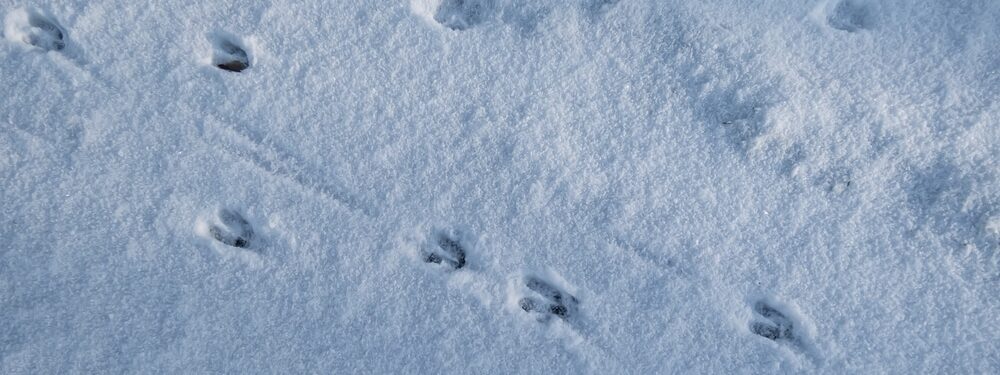
The distance between consecutive tracks is called stride length. It reveals the deer’s gait and how urgently it was traveling. Here’s how to interpret it:
Short Stride Length (6-12 inches/15-30 cm): This indicates a slow, deliberate walk, possibly used for browsing or casual movement. Measurements are often taken from left front to left front to determine the stride length.
Medium Stride Length (12-20 inches/30-50 cm): This suggests a trot, a more purposeful gait for covering longer distances.
Long Stride Length (Over 20 inches/Over 50 cm): This signifies a run, typically used by deer when spooked or fleeing danger. The left hind track can provide insights into the deer’s gait patterns and energetic movements.
You can understand the deer’s activity by analyzing stride length in a series of tracks. You may also predict its travel direction.
Track Patterns: Unveiling the Deer’s Story
The layout of their tracks can reveal much. They tell us about the deer’s behavior and social interactions. Here are some common patterns to look for:
Single File: Tracks arranged in a single line indicate a solitary deer or a small group traveling in the same direction. A direct register walk, where the hindfoot lands directly where the front foot did, is a key pattern to identify in this context.
Double File: Two parallel lines of tracks suggest multiple deer traveling together, possibly a doe and fawn or a group of does. Identifying a single track from multiple tracks is crucial for understanding deer behavior, emotional state, and motivations.
Scrapes & Rubs: These are not technically tracks but are often associated with deer trails. Scrapes are markings on the ground made by bucks with their hooves, while rubs are marks on trees left by bucks using their antlers. These signs can indicate deer activity and potential breeding areas.
By interpreting track patterns and associating them with other deer sign, you can build a picture of deer behavior in your hunting area.

